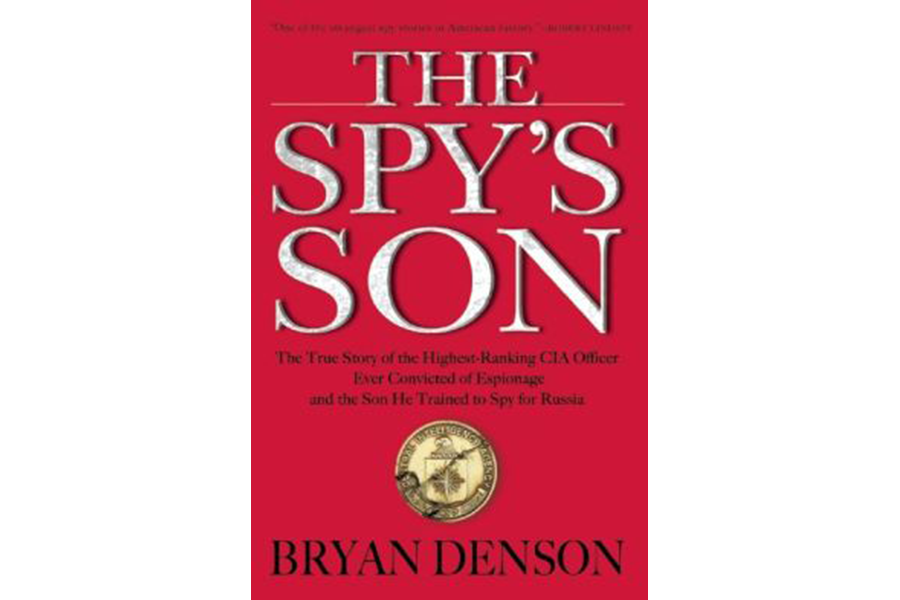'The Spy’s Son’ is a startling story of a father-son team who bluffed the CIA
Loading...
No one should have trusted an imprisoned ex-CIA spy named Jim Nicholson for a second. After all, as author Bryan Denson puts it, he’d been “professionally trained at duplicity and deceit” and betrayed his country in one of the most shocking espionage scandals in US history. One top of that he was one fortunate turncoat: Before he finally getting caught, he’d set off alarms that were ignored.
But the federal prison let Nicholson see one of the only people in the world who trusted him: his young son. Their bond allowed the man behind bars to mastermind more treason and embarrass the US once more, all right under the nose of a clueless system that failed spectacularly. Again.
Harold James “Jim” Nicholson’s name doesn’t rank up there with traitorous American spies like Aldrich Ames and Robert Hanssen, who became the subjects of documentaries, a network miniseries, and Hollywood movies. But he may gain fame thanks to Denson’s startling new book The Spy's Son: The True Story of the Highest-Ranking CIA Officer Ever Convicted of Espionage and the Son He Trained to Spy for Russia.
Denson, an Oregon newspaper reporter, focuses on a detailed chronology of events instead of delving deeply into the contradictions and pressures built into espionage. But the timeline packs plenty of punch on its own by revealing stunning ineptitude and failure of imagination among the very people entrusted to protect American secrets and lives around the world.
Consider this: Nicholson “was surfing the CIA’s computers for information he didn’t need,” but nothing happened. (He was actually copying data and transferring it to disk to give to the Russians.) He filled his bank account with money after overseas trips where he met Russian spies, but no one noticed. He even had a Swiss bank account under his own name.
Eventually, his bosses caught on, but only after getting a tip. The CIA and FBI worked together to take Nicholson down and send him to prison. But the turncoat spy wasn’t done giving information to the Russians. His next step was to use his son Nathan Nicholson as a go-between to give them insight into the mole on the Russian side who gave him up via that tip. Amazingly, the father managed to do just that, using a variety of stunningly low-tech ways to sneak information in and out of prison.
In fact, one of the most intriguing lessons of “The Spy’s Son” is how much of spycraft is low-tech and even no-tech, just like on TV espionage shows like “The Americans”: Nathan Nicholson writes questions from the Russians on his arm when he visits his father, and the elder Nicholson delivers papers to his son through the CIA-sanctioned “art of the brush-pass.”
Meanwhile, spies do indeed confirm each other’s identity through scripted questions-and-answers on the street (“Do you know the way to the federal post office?”). And they use email just like anyone else. In this case, the younger Nicholson alerted the Russians to a sneaky way that American teenagers hide emails from their parents. That’s how he communicated with his minder.
Thanks to Denson, who covered the case against father and son when it hit an Oregon federal courthouse in 2009, “The Spy’s Son” isn’t a grim read.
Denson has a knack for sly wordplay (a “cubicle village” at CIA headquarters is a “clean-well carpeted place full of file cabinets and misery”) and descriptions (at first, the elder Nicholson in court looks like a man who plays “tenor sax in a jazz quartet,” but closer inspection reveals that “this guy knows he’s the smartest man in the building.”)
And Denson knows a funny story when he sees one, like when a history-fluent FBI agent offers to help when a boss declares he needs an expert in “eunuchs.” In fact, he wanted a UNIX computer guru; the agent didn’t confess his error but contacted Sun Microsystems instead.
More importantly for the story, Denson also uses his powers as a reporter – and, apparently, a nice guy – to get the younger Nicholson to spend hundreds of hours talking to him. Denson acknowledges that the two men developed their own father-and-son relationship. They share personal stories and even a blunt honesty.
One day, Denson asks the son whether he betrayed his country. “Absolutely,” responds Nathan Nicholson, who gets a sentence that many readers will find head-spinning.
So once again, a Nicholson – this one trained in the art of deception by his own flesh and blood – gains trust after committing treason.
This time, we can hope, the son is reformed, unlike his father, a man whose final court appearance featured apologies to his family and to the country he holds dear and felt terrible about embarrassing. No, not this one. Russia.
Randy Dotinga, a Monitor contributor, is president of the American Society of Journalists and Authors.








